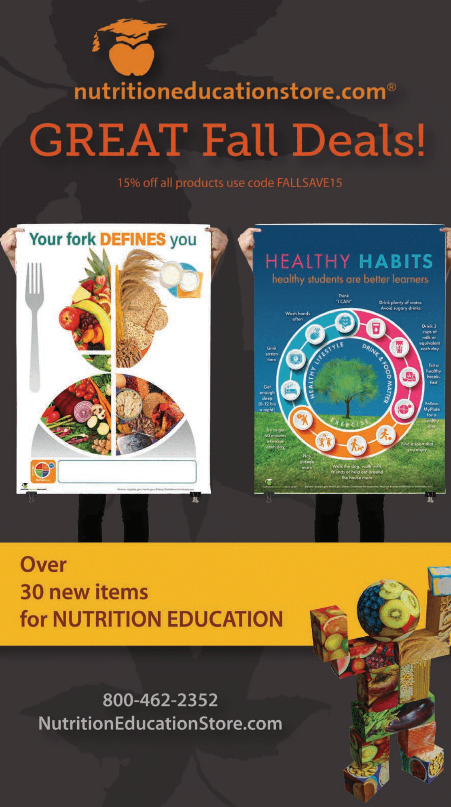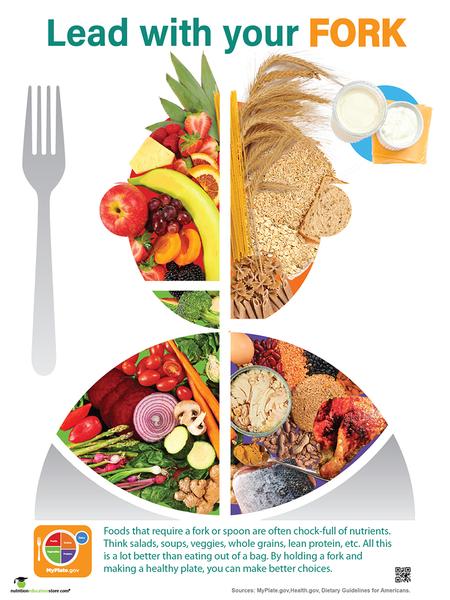Have you seen the new fall catalog yet?
I think it’s one of our best ones ever!

My graphic designer and I have been working on the newest poster designs for months! We came up with the concepts, created the photos, picked the colors, and then modeled everything. Then we rested. Then we assessed, re-assessed, and tweaked with the whole team until we had created posters that we were entirely confident you and your clients would love!
Let’s shine a spotlight on one of my favorites, shall we?
It’s time to Lead With Your Fork!
Traditionally, foods that you can eat out of a bag with your hands (including snacks and most fast food) are loaded with empty calories and devoid of the nutrients that you need for good health.
Foods that require a fork or a spoon to eat, however, are often chock-full of nutrients. Think salads, soups, rice, veggies, lean protein, etc. All this is a lot better for health than eating out of a bag!
We have created this amazing graphic poster, Lead With Your Fork, to help people visualize how their eating patterns impact their health.

What a great way to show how to put your best fork forward! This poster supports the messages of our two most important resources for education, MyPlate and the Dietary Guidelines for Americans.
- MyPlate advises people to divide their plates between fruits, vegetables, whole grains, varied protein, and low-fat dairy at each meal.
- The Dietary Guidelines for Americans maintain that “All food and beverage choices matter. Choose a healthy eating pattern at an appropriate calorie level to help achieve and maintain healthy body weight, support nutrient adequacy, and reduce the risk of chronic disease.” That means focusing on variety, nutrient density, and amount of food while limiting consumption of added sugars, saturated and trans fats, and sodium.
This health and nutrition education poster, Lead With Your Fork, helps everyone visualize a balanced and healthful eating style. It is also very light-hearted and positive. It would be great for nutrition awareness or health fair programs!
And of course, there’s lots more in the fall catalog. Which items are you most excited about? The prizes? The handouts? The books?
Finally, just ’cause I love ya, I’ve come up with a new discount. Use the code FALLSAVE15 to save 15% on any and all products!








